In the winter season of cold, snow and holiday music, the North American bird breeding and nesting season seems months away. It’s not until the trees begin to bud and flowers bloom that the birdsong fills the air.
And that’s true. But not for great horned owls.
Winter is the time to enjoy the great horned owl breeding season–a time when these charismatic birds are much easier to see and hear.
It’s the hooting season.
Don a winter cap and head out to your local park or walking trail to enjoy one of the season’s coolest spectacles. Here’s what you need for your next owl outing.
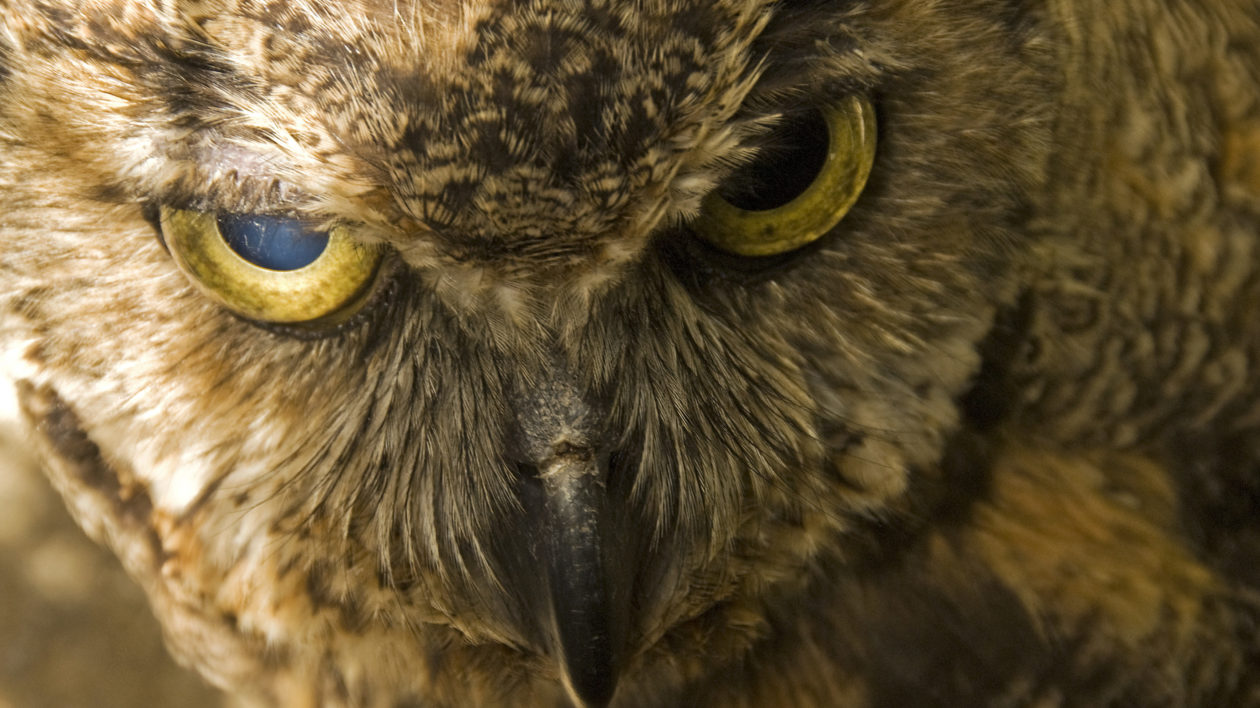
Into Owl Territory
The great horned owl, of course, is one of the most recognizable birds in the Americas, with its pointy feather tufts (the “horns”) and large fluffy appearance.
This is the prototypical “wise old owl,” and the owl of cartoons and children’s books.
It’s also incredibly adaptable, found from Canada to Patagonia, and most places in between. It is at home in desert and wetland, forest and prairie. And it also has no trouble thriving around people: you can find them in parks, farms, small woodlots, suburbs and cities.
Despite this, they’re not always easy to spot due to their nocturnal habits. But at this time of year, in the right location, a chorus of hoots provides the soundtrack to dawn and dusk.
That’s because, around October, male great horned owls begin setting up territories. Most great horned owls mate for life, but in the fall the pair begin a courtship display, loudly calling to each other.
Become a Member
Make a lasting impact for nature when you join The Nature Conservancy
The great horned owl’s hoot is pretty much unmistakable, although ornithology web sites often describe it in different ways. A common hooting pattern is a longer hoooooot, followed by two or three shorter hoots.
And these owls have a range of other vocalizations, too, some of which sound like barks or a screeching cat. (Cornell’s All About Birds site features some great audio of these different calls).
The owls continue setting up their territory this month, and begin setting up a nest.
They’ll use an abandoned nest previously used by a red-tailed hawk, squirrel or other critter. Come January, they’ll begin setting in the nest–far earlier than most other birds.
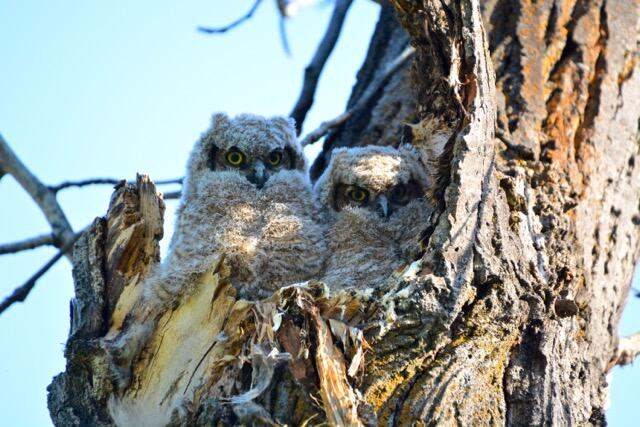
Why Do Owls Nest So Early?
Nesting early naturally entails some risk. Eggs must be kept warm and incubated, which can be a challenge when the temperature is in the single digits and snow is falling.
Female owls stay on the nest for prolonged periods (and when they leave to hunt, the male will take over).
If the eggs become too cold, they won’t hatch. This is why most birds wait until temperatures are warm and mild.
So: why nest early?
Owls are large birds. It takes them longer to grow and mature than, say, a songbird.
Young great horned owls must also master complex hunting maneuvers. They are equipped with superb senses – researchers have found that a great horned owl can hear a mouse rustling at 900 feet – but hunting still involves learning, trial and error.
Early hatching means they’re ready to practice their flying and hunting skills when the weather is mild and prey is abundant.
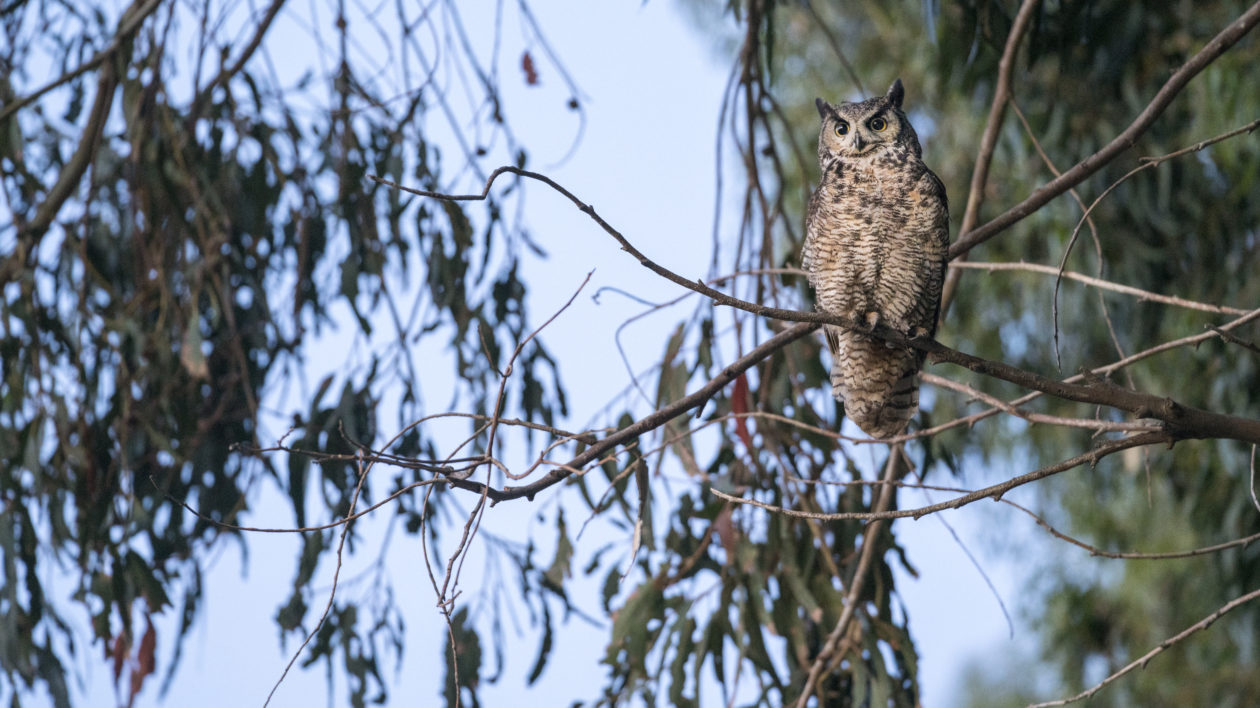
Enjoying the Owl Show
There’s likely a great horned owl territory near you. Now you just need to find it.
While owls can live in a variety of habitats, you won’t find them just anywhere. Focus on the edges. Owls prefer to have a good vantage point – a place where they can see out over the terrain.
Trees that overlook an open area are ideal. In particular, try to find a big-limbed tree that has shed its leaves (or a dead one). You can often find owls roosting there.
You can do a bit of scouting, too. Owls regurgitate the indigestible hair and bones of their prey: called owl pellets. You can often find a number of these pellets below preferred trees. (You can often reassemble the bones of mice by dissecting an owl pellet, another fun wintertime activity).
Of course, the easiest way to spot owls is not by looking, but listening. Those haunting hoots carry a long way. Sometimes you almost feel those hoots before you see them.
Once you hear the hooting, look carefully in likely trees, and you may be able to see the distinctive profile of the owl. Look through a binocular, and don’t be surprised if the owl is staring back at you.
It pays to quietly observe the owls for a while. I’ve been able to watch some interesting behavior, including owls mating.
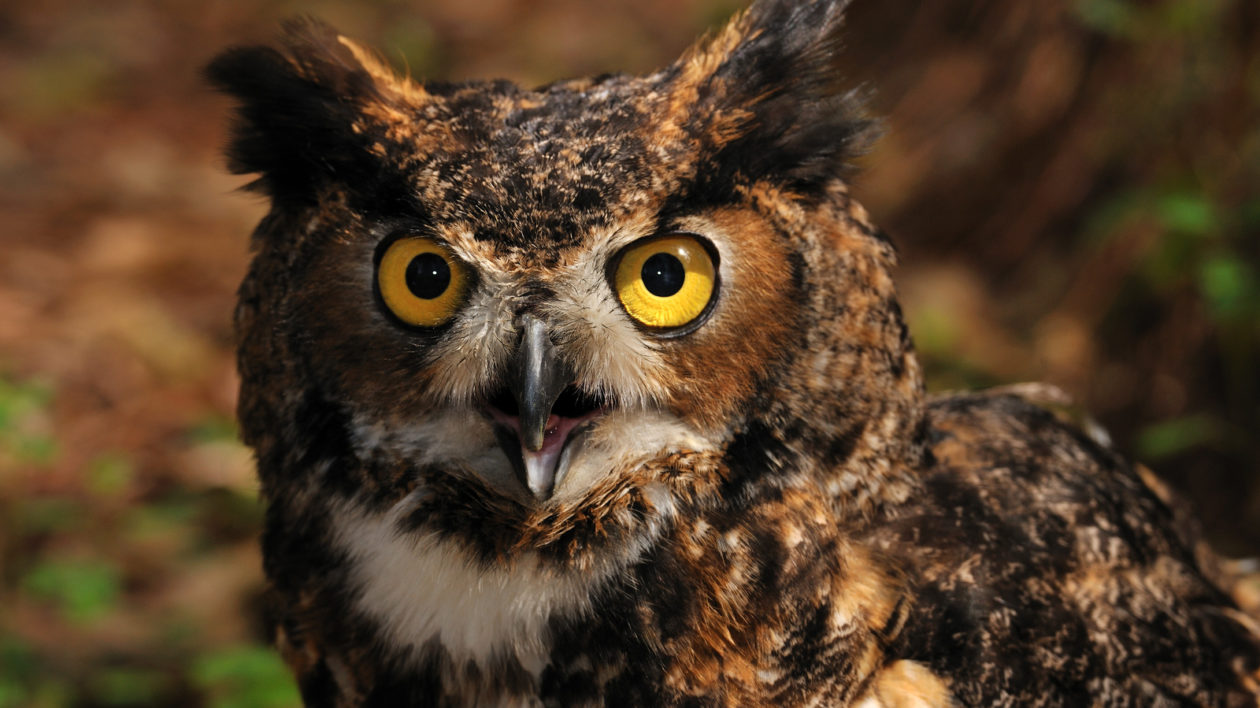
Photo © Mark Conlin, courtesy of Tallahassee Natural History Museum
My Owl Connection
Family lore holds that, long before I could utter words, I would lie in my crib and hoot like an owl. Perhaps my naturalist path was set, even then.
That story has been in my thoughts this year, as I prepare for the birth of my own son. The great horned owls, it seems, are everywhere. I see them perched on trees around our home and along the greenbelt jogging path; hear their calls in the canyons and river bottoms.
I’m always alert to the local wildlife, but this year, I can’t help but pay extra attention to all that owl activity.
I wake up in the middle of the night, thinking of my son and the world he’ll inhabit. And then, there it is: that deep hoot, hoot, hooting.
It seems to fill the room.
I snuggle under the covers and smile, filled with the hope that my son will find such comfort and joy in the wild things and their always-interesting ways.
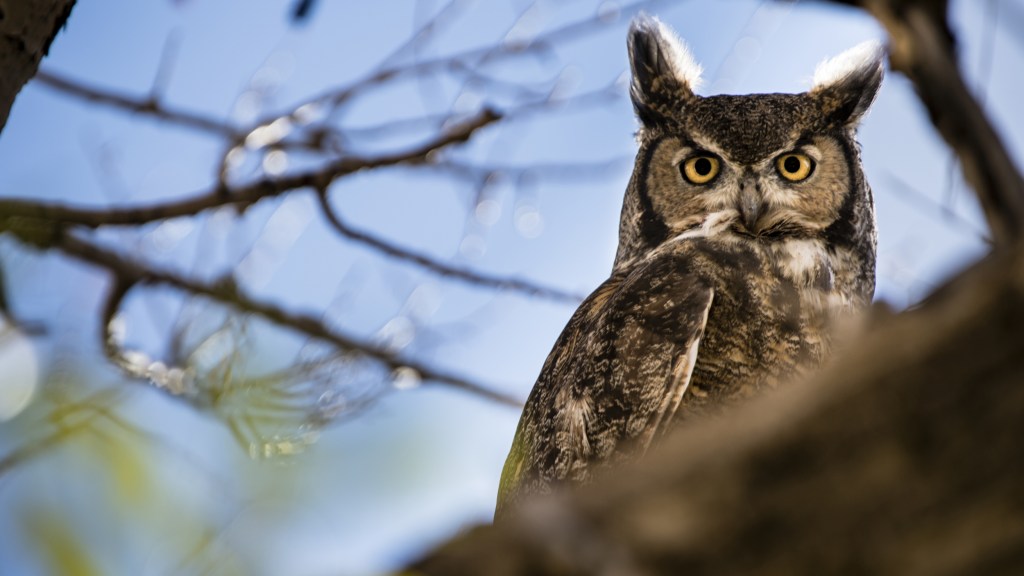



Thank you so much for sharing your article. I love wildlife and respect it on all levels. I came across your article while researching owls in georgia to increase my knowledge level of the beautiful bird.
When I got to the part about your son from there to the end of the article I had chill bumps and watery eyes and a comforting smile on my face.
God bless you and your family. Keep up the good instincts for wildlife.
Tammy,
Thanks so much for writing and your kind comments! Glad you enjoyed the stories.
Best,
Matt
I really enjoyed that! I’m in the Bay Area SF. Where do you think I can find them here?
I would listen in the evenings in parks and any forested areas. It seems like the trees around Fort Baker might be good, but I’d check any forested patch you can find.
I am awake at 2 AM because a Great Horned Owl has been visiting near my kitchen garden below my bedroom window. For two or three nights over the last few weeks, there was only one, quite loudly hooting.
Tonight it was joined by a second owl, who hoot was deeper and more muffled sounding. I had thought they must be mating, but the time of year is wrong, isn’t it? It’s May 4 in Connecticut, quiet and peaceful during pandemic lockdown.
We live near a swamp, but I think they’re drawn to this corner of the house because it’s where I feed my little dachshund who prefers meat scraps to dog kibble. She leaves dog kibble strewn about, and has probably drawn mice, who have in turn caught the attention of GHOs.
Do they hunt in pairs? I would swear it’s a mating couple. Would they be late due to the odd weather?
They are likely a breeding pair. They keep their territory through spring.
My husband and our neighbors recently were able to watch a Great Horned Owl sit 2 eggs in a large oak tree in our front yard. We live in Tx. and the climate in March was already getting mild. The 2 little owlets were so fun to watch. I read where the mother owl doesnt do much to make a nest and one of the babies fell out and my next door neighbor got his extendion ladder and with gloves and a box he carefully put it back in the nest while mama was gone. She came back and stayed with them but overnight sometime she either pushed it out or did it by accident. It didnt make it. The second one fell out twice and my neighbor put it back and she always came back to be with it and it was eating a dead bird provided by one of the parents but last Tuesday we had a bad storm. I was worried it would get blown out or washed out by heavy rain but my gut told me let mama take care of it. Well it was on the ground dead the next morning. Probably about 3 weeks from learning to fly. It was already stretching its wings. Storm was bad, very heavy rain. Wondered did mama stay with it or was it on its own. I was just sick and still think about it. Should we have gotten it out of the tree and protect it from the storm? I thought of getting it out of the tree if it would let me and taking it to a lady who takes owls and hawks when young or injured and gets them where they can be on their own. I feel bad I didnt help the little owlet. Miss watching it put on a show.
We have been blessed to have a mating pair of Great Horned owls in our yard for many years now. We always look forward to first hearing them, then seeing them and then discovering the location of their nest for another year. Of course the highlight is to see those little white balls appear above the upper edge of the nest and then trying to decide it their is one, two or three little ones. In our experience we have only had three little ones once and were able to capture some wonder photos because of the location of the nest that year. I usually set up a camera so we can watch the activity at the nest from inside on our computer. Amazing to see them interact with each other and the feeding process is from mother to baby is a procedure to behold. We are blessed to have them in our yard again at this time and nesting. We will wait to see the results in the days ahead.
Read this several times and loved it more each time. I love owls, great horned being my favorite. Do u know why I am hearing one mid day at 1 pm here today? I’m trying to figure it out
Hi Theresa,
Glad you enjoyed this story. Owls mainly hoot at dawn and dusk, and during the night, but they do occasionally hoot during the day. I hear them in my own neighborhood occasionally. I hope you continue to enjoy the owl show! Matt
Thank you for insightful article.
I also enjoy hearing the owls with the conversation and had to find out what they might be talking about it’s really interesting
I as a falconer have had numerous Horned Owls in my life. In January I always listen for the males booming hooting calls and then the female hooting back.These are owls that will kill and eat almost prey bigger than they are.I hunted Jack rabbits with a large female for a season and then released her back to the wild.I love these birds for the noble presence and fierce attitude they have..You can hear them calling in the breeding season while in the forest or parks near you, cemeteries are also a great place to see them.
(Bubo virginianus) The Great horned owl..Listen for them in your neck of the woods.
What time of day or night will a Grey horned owl will hoot hoot. Mostly during the or at night?
Thanks for your question. They most often hoot at dawn, dusk and night. I have heard a few hoots in the middle of the day, but it’s pretty rare.
We watched an unusual owl display morning. A great horned owl, perched about 100 feet from our upstairs window, would duck his head low as he gave the deep Hoot. Simultaneously something fairly large, white with a dark top projected up beside him. Initially we suspected a second bird, but the repetition and no other movement by The Thing changed our minds. It might have been a wing but there was no resemblance other than colour. Why the deep bow and the projection? We have never noticed this in any other observations.
I have 2 great horned owls who just started all this hooting back and forth. Its Jan 3, 2020 and we’ve been having warmer than usual weather for Southern Indiana
Do you think climate change is affecting owls? And how long does this hooting go on? I need some sleep! LOL
How does artificial lighting affect the breeding and nesting behavior of Great Horned Owls?
The night after my mother died, 1.2.06, about 2AM, I got up to go out to the barn to open a gate for a horse that was locked in a stall. It was very cold and still and there was fresh snow on the ground. After letting the horse out into the paddock with the other horses we all stood quietly together in the darkness and listened to the low hooting of a great owl and the high shriller answer of another. It was one of the most profound comforting moments of my life. I will never forget it.
I am only an occasional bird watcher but this fall I spotted two “flying cats” which dropped into my neighbor’s yard at dusk. As they emerged and teetered on a wire, I realized their silhouette was the great horned owl. For several weeks my birder friend and I observed them in a tree across an open area from my house. Every day they showed themselves just before sunset. After some fluttering around on the branches, they would hoot for a few minutes and then fly usually to lower branches or a fence and then down into a ditch that was usually on the dry side.
I have heard them during the night and in the morning before sunrise. A few nights ago, they called for a long time, over an hour, and before sunrise. Now all seems quiet. Have they left? Have they moved? I live in Houston and the leaves have just started to fall. Will they seek to perch in pines instead?
This owl encounter has been a fascinating experience for me.